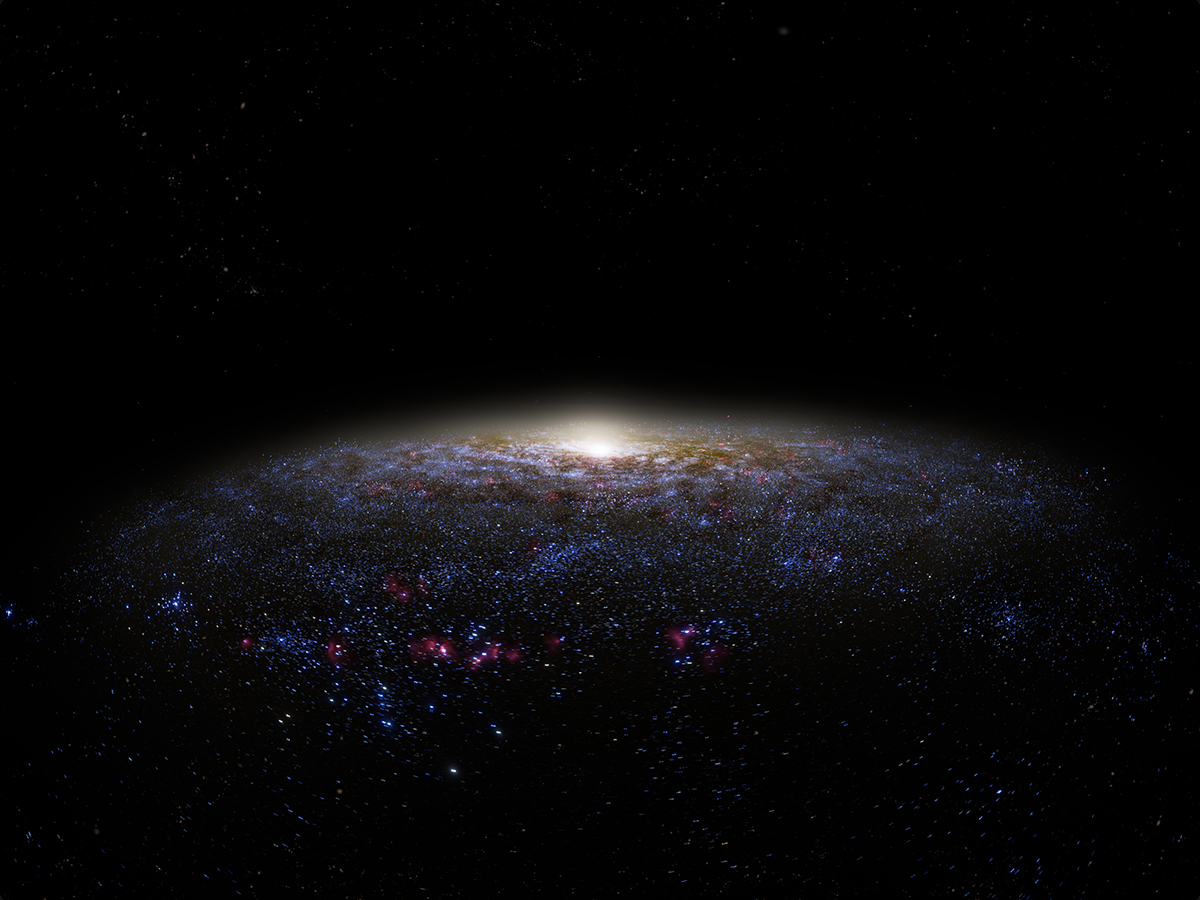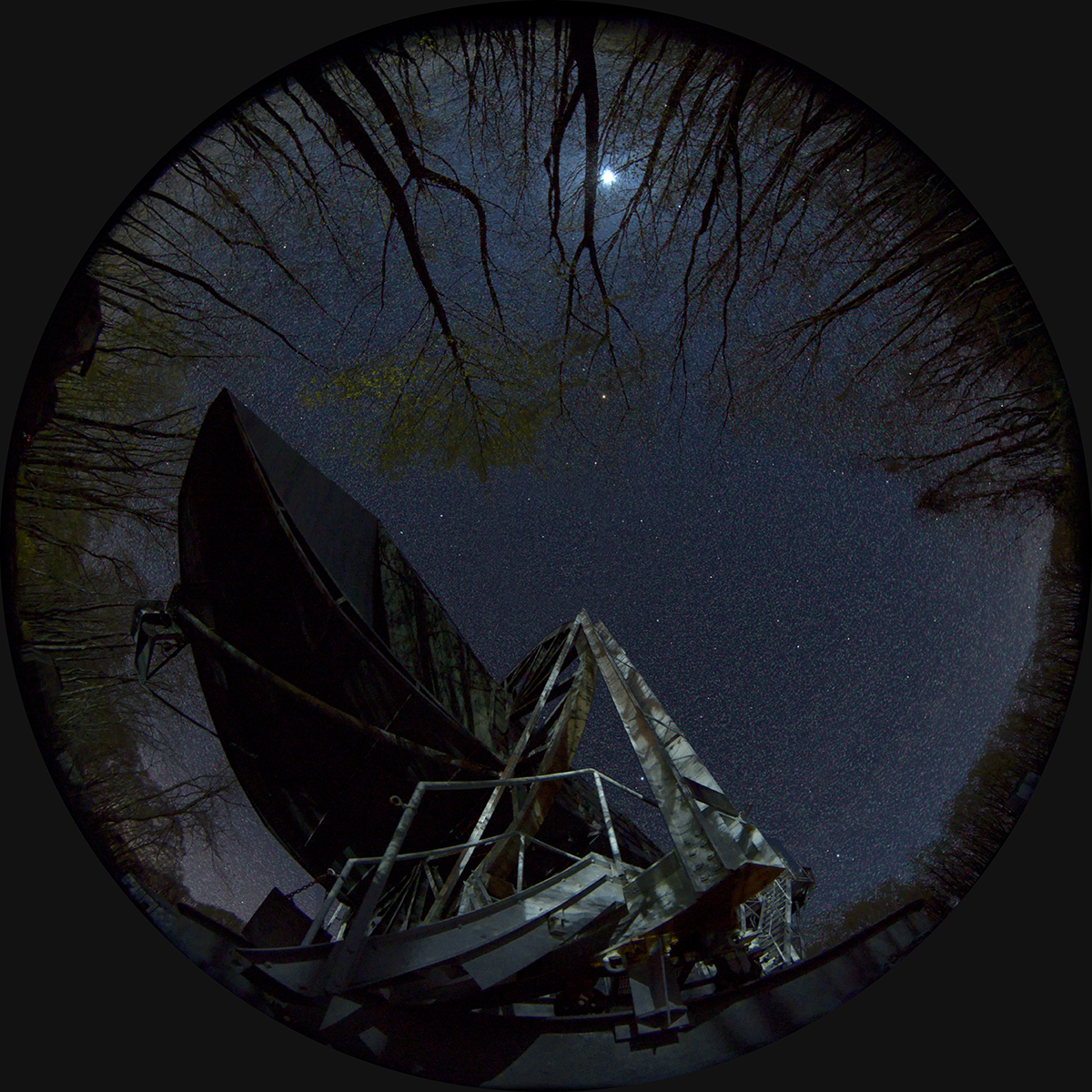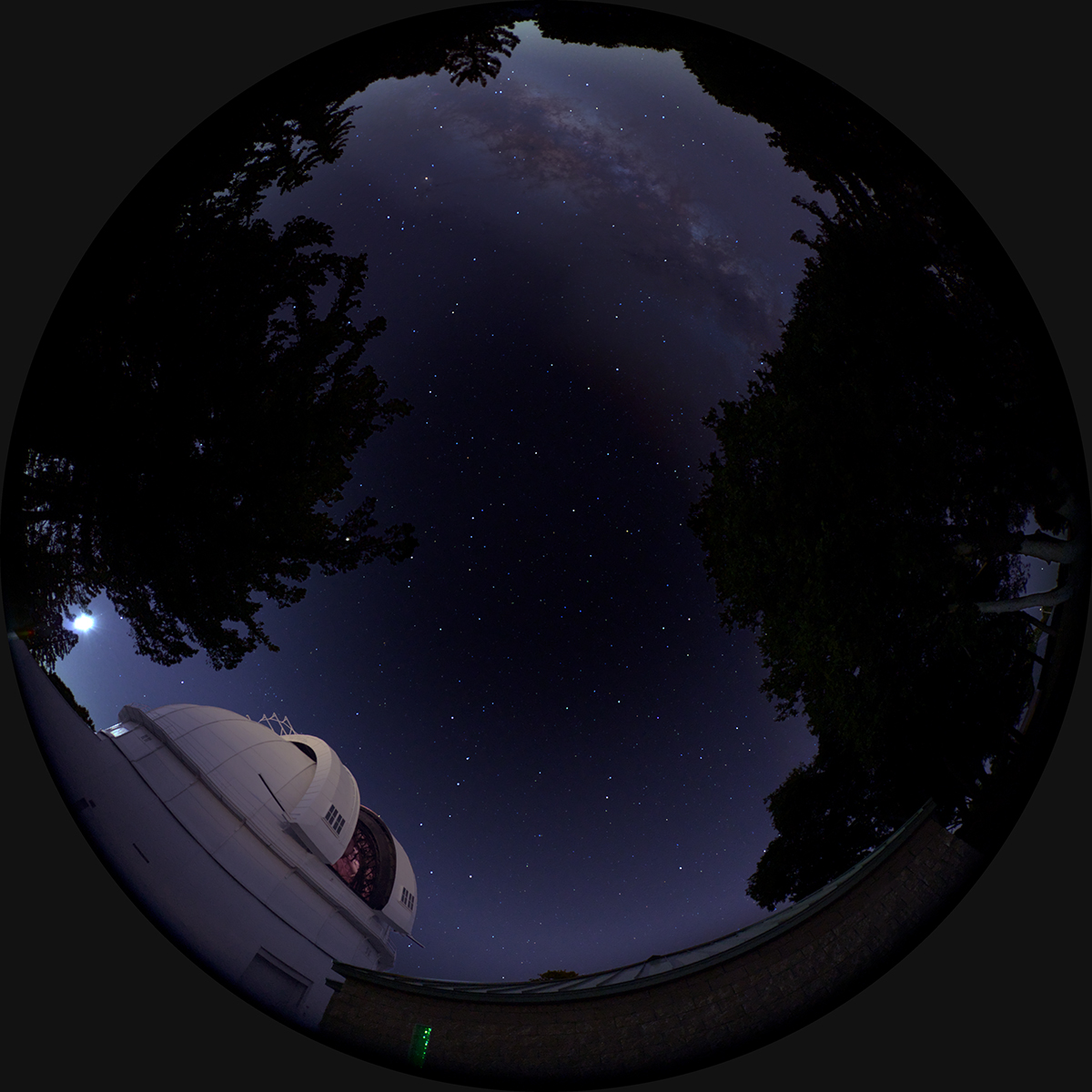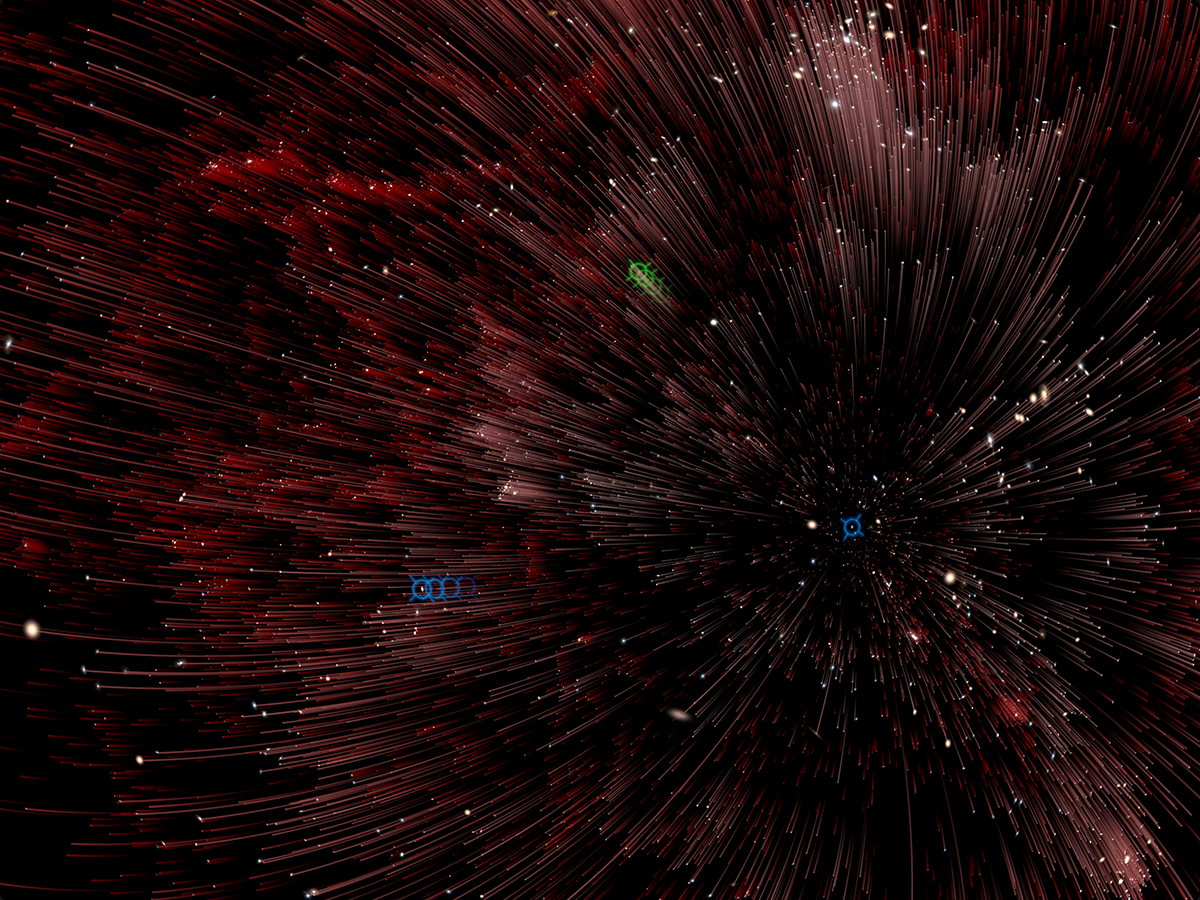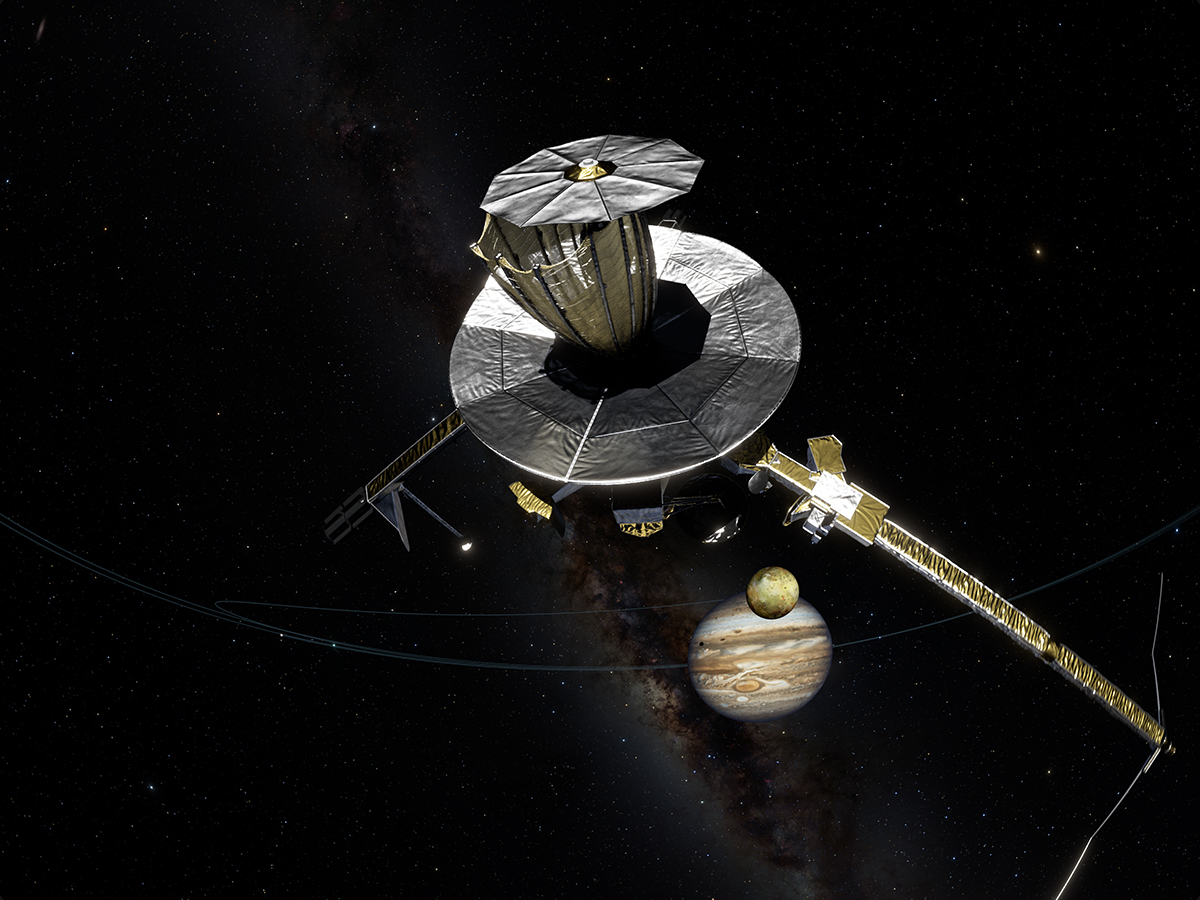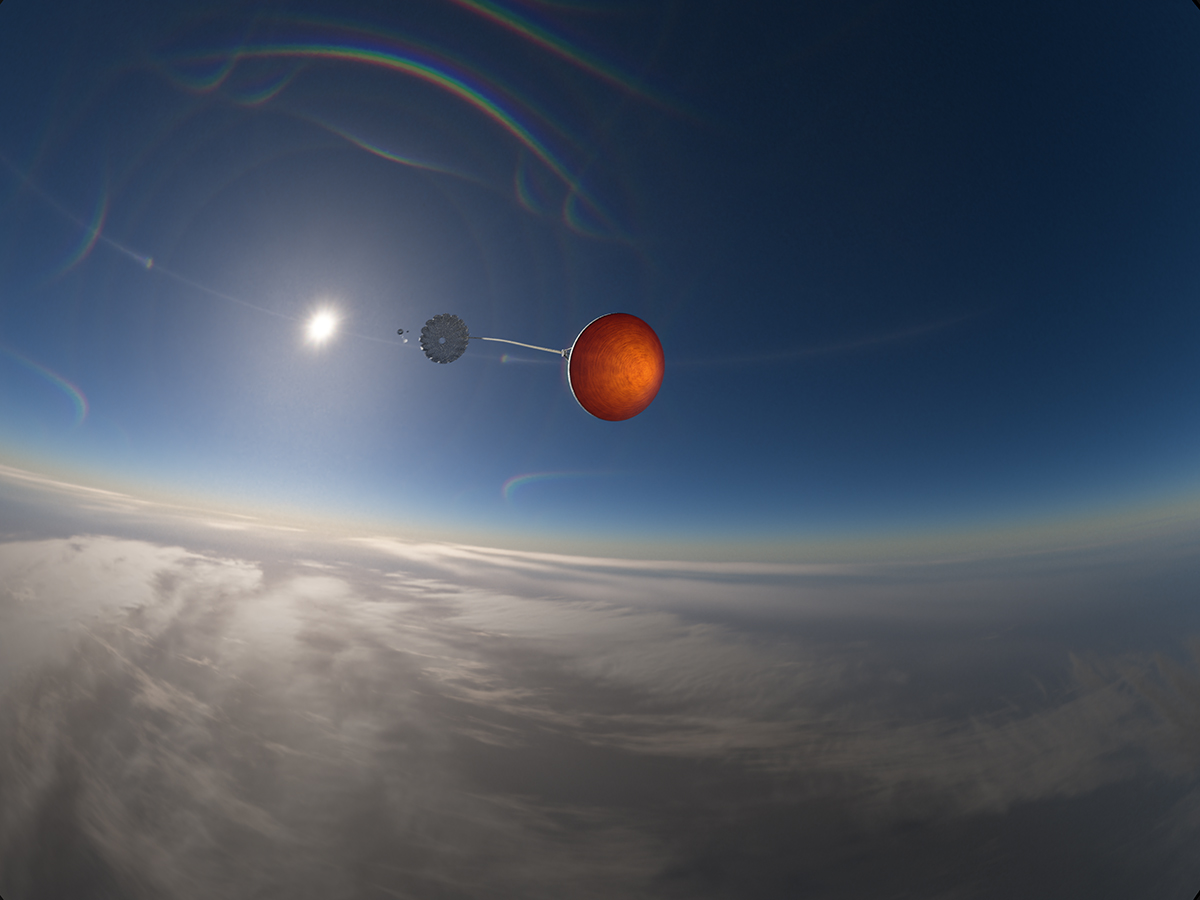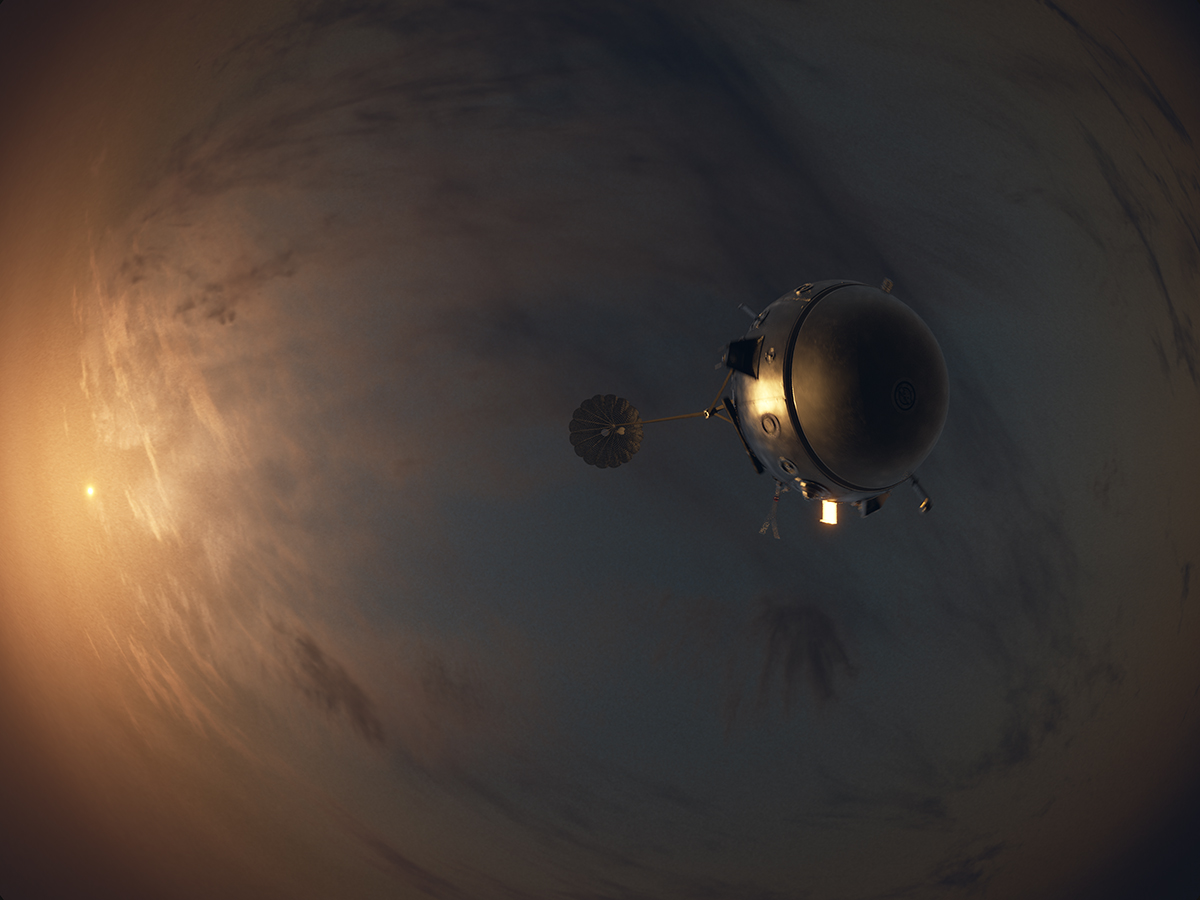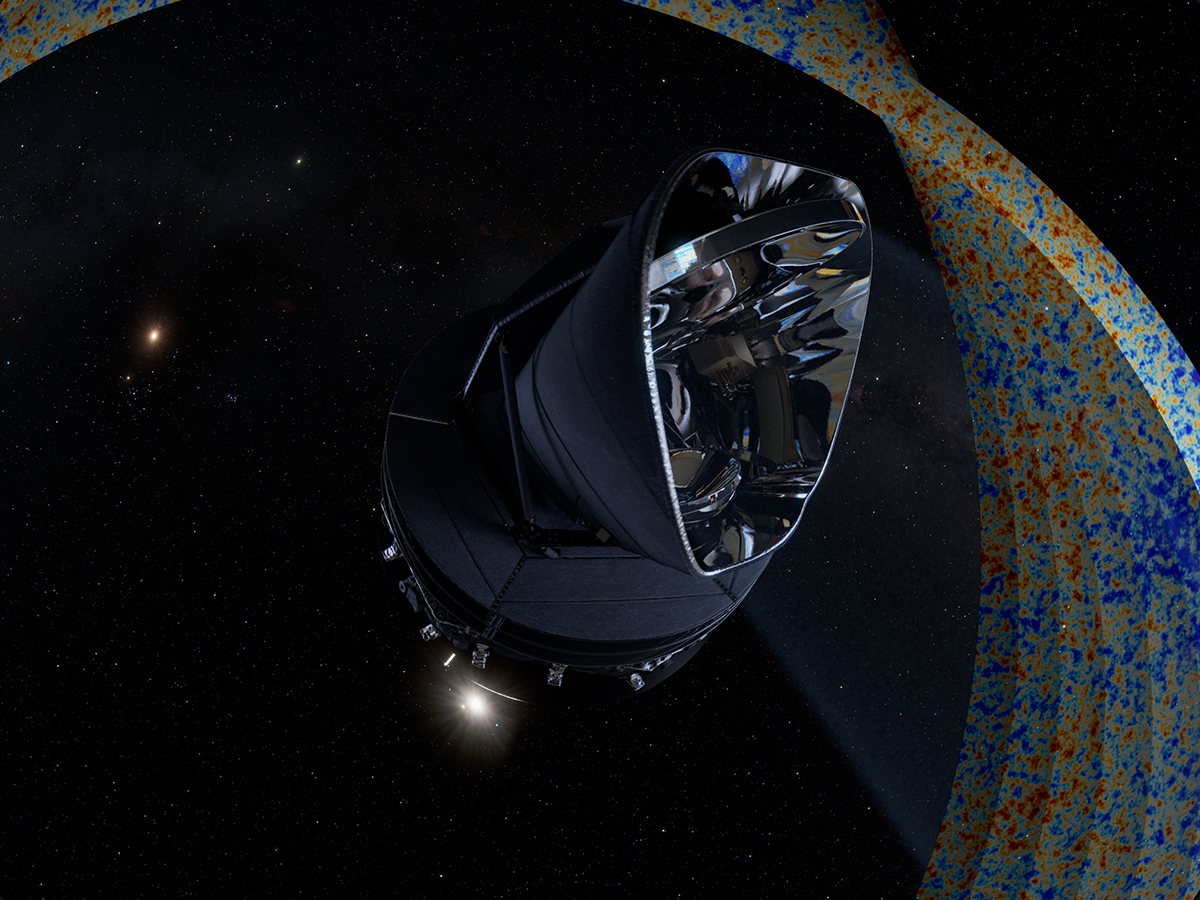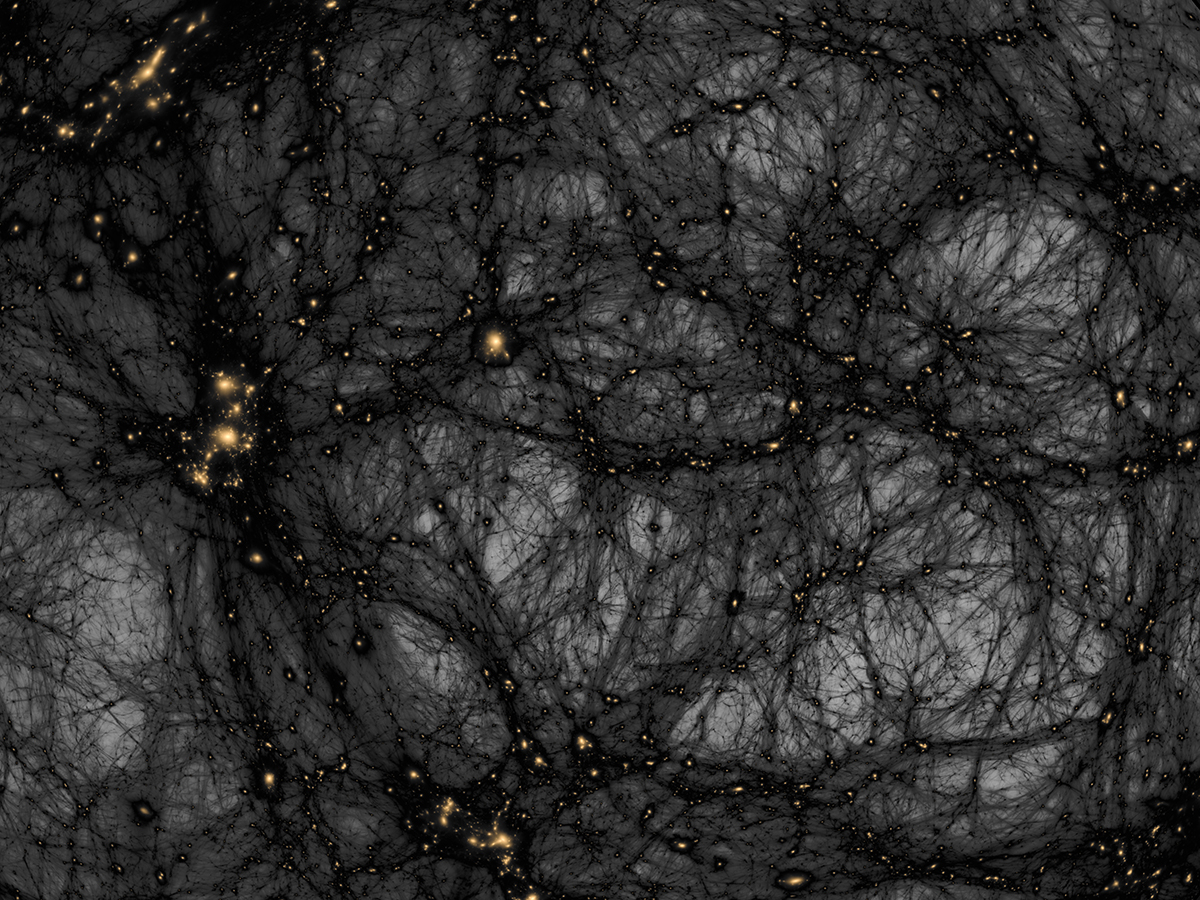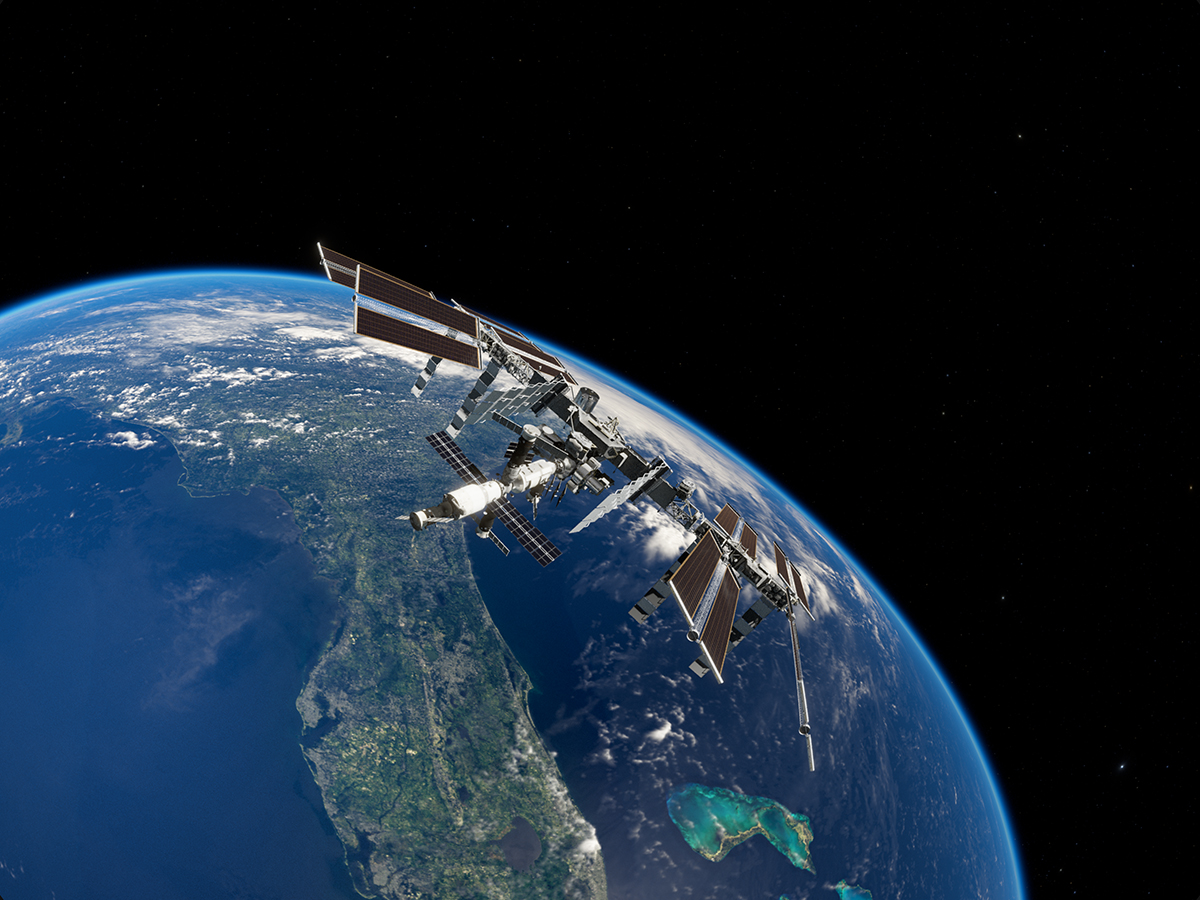Photos: 'Dark Universe' Planetarium Show
Milky Way Galaxy
The visualization of the Milky Way Galaxy in Dark Universe shows the most accurate 3D simulation ever produced of our galaxy. Developed by the National Astrophysical Observatory of Japan, the high-resolution numerical model includes both stars and gas and is constrained to agree with actual observations of the galaxy.
Bell Horn
Alcatel-Lucent’s Bell Labs in New Jersey is home to the Horn Antenna, the radio telescope that about 50 years ago was used to serendipitously discover the cosmic microwave background that provides direct evidence for the hot, dense state of the early universe.
Mt. Wilson
Mount Wilson Observatory in California is where Edwin Hubble first discovered the expansion of the galaxies that led astronomers to the Big Bang theory.
Mount Wilson Observatory
Mount Wilson Observatory in California is where Edwin Hubble first discovered the expansion of the galaxies that led astronomers to the Big Bang theory.
Red Shift
This scene from Dark Universe shows the expansion of space, carrying the galaxies away from any observation point. The faster the galaxies recede, the redder the motion vector, symbolizing a phenomenon known as red shift, in which light from objects moving away from an observer appears to be stretched out to longer, redder wavelengths.
Galileo
In 1995, NASA’s Galileo spacecraft sent a probe hurtling into Jupiter’s atmosphere. Among other experiments, the probe measured the abundance there of deuterium, hydrogen with an extra neutron. This measurement confirmed the prediction of the Big Bang theory that the universe was once so hot everywhere that deuterium could be formed by nuclear fusion.
NASA’s Galileo Spacecraft
In 1995, NASA’s Galileo spacecraft sent a probe hurtling into Jupiter’s atmosphere. Among other experiments, the probe measured the abundance there of deuterium, hydrogen with an extra neutron. This measurement confirmed the prediction of the Big Bang theory that the universe was once so hot everywhere that deuterium could be formed by nuclear fusion.
Breaking space news, the latest updates on rocket launches, skywatching events and more!
Galileo Spacecraft
In 1995, NASA’s Galileo spacecraft sent a probe hurtling into Jupiter’s atmosphere. Among other experiments, the probe measured the abundance there of deuterium, hydrogen with an extra neutron. This measurement confirmed the prediction of the Big Bang theory that the universe was once so hot everywhere that deuterium could be formed by nuclear fusion.
Planck Space Telescope
The European Space Agency’s Planck space telescope recently completed the most detailed all-sky map of the cosmic microwave background, the afterglow of the Big Bang that was emitted when the early universe was as hot as the surface of the Sun.
Dark Matter
Dark matter is an invisible material that emits or absorbs no light but betrays its presence by interacting gravitationally with visible matter. This image from Dark Universe shows the distribution of dark matter in the universe, as simulated with a novel, high-resolution algorithm at the Kavli Institute of Particle Astrophysics & Cosmology at Stanford University and SLAC National Accelerator Laboratory.
International Space Station
Scientists around the world are trying to figure out just what dark matter is with experiments underground and in space. One such experiment is the Alpha Magnetic Spectrometer, an instrument on board the International Space Station.

Space.com is the premier source of space exploration, innovation and astronomy news, chronicling (and celebrating) humanity's ongoing expansion across the final frontier. Originally founded in 1999, Space.com is, and always has been, the passion of writers and editors who are space fans and also trained journalists. Our current news team consists of Editor-in-Chief Tariq Malik; Editor Hanneke Weitering, Senior Space Writer Mike Wall; Senior Writer Meghan Bartels; Senior Writer Chelsea Gohd, Senior Writer Tereza Pultarova and Staff Writer Alexander Cox, focusing on e-commerce. Senior Producer Steve Spaleta oversees our space videos, with Diana Whitcroft as our Social Media Editor.
